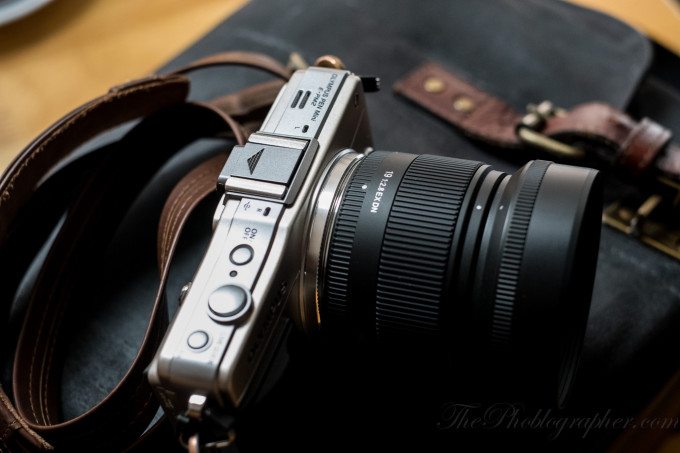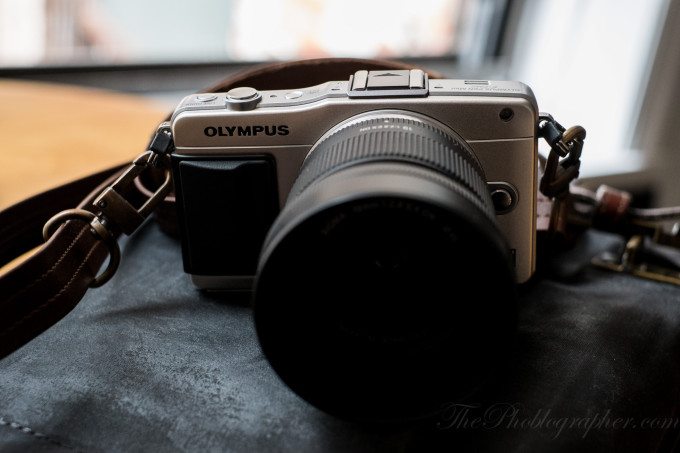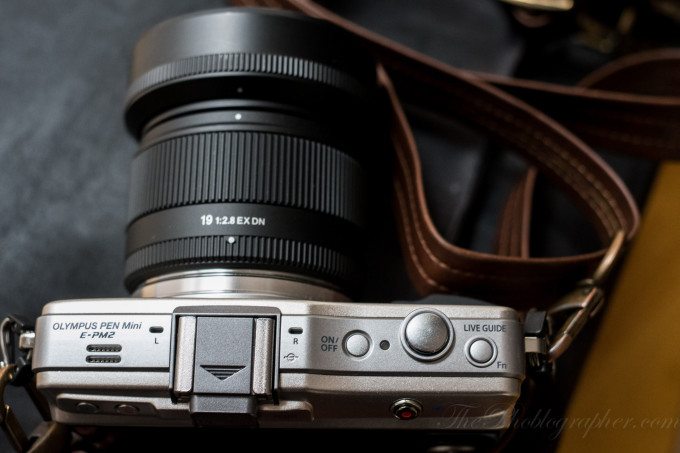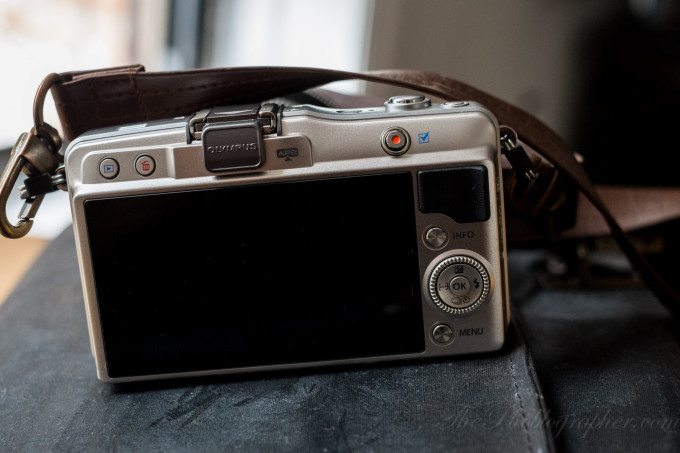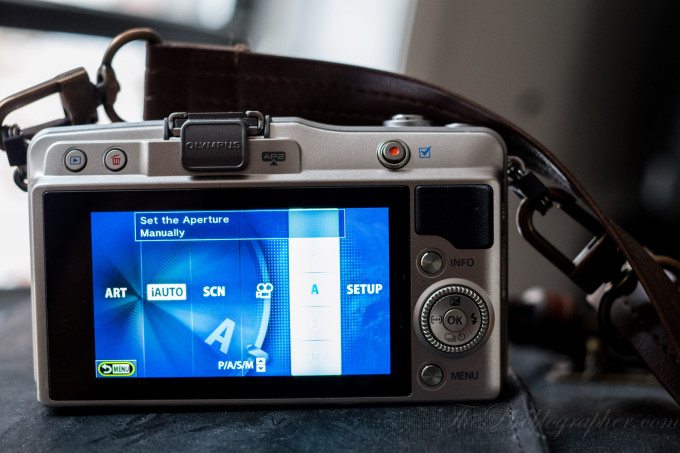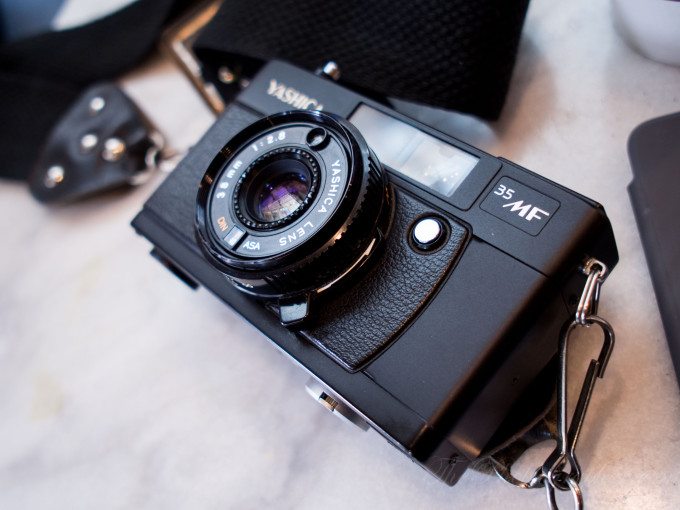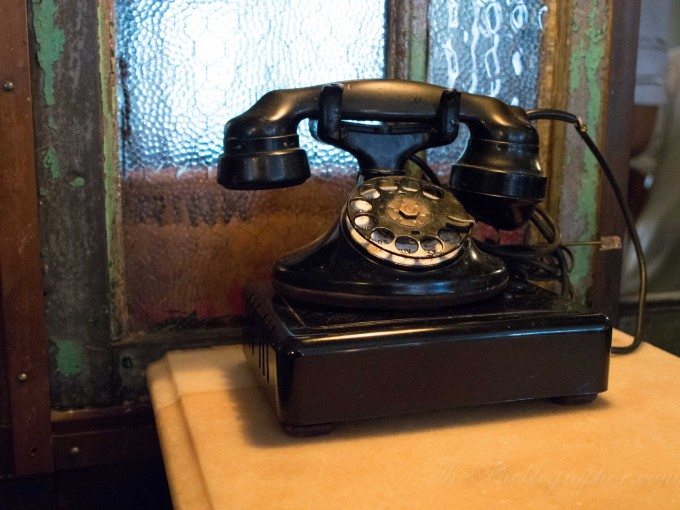The Olympus EPM2 is the successor to the EPM1: a camera that was very much the barebones of the Olympus PEN system. With the upgrade to the EPM2 though, the camera is in many ways the EP3 but even better in many aspects. Targeted at the user that wants something very simple, it can indeed be that type of a camera providing that you don’t go digging through the menus. Once you do that, you subject yourself to a couple of user problems that might not be the easiest to deal with.
Despite those inconveniences, the camera can still wow you at times. Oh, and before you ask, the strap in the image is the from the Olympus Pen Premium Case.
Pros and Cons
Pros
– Very fast autofocusing
– The addition of the touchscreen made the EPM series much more user friendly
– Excellent image quality with very sharp photos
– Extremely versatile RAW files
Cons
– Menu after menu, after menu
– Image quality not as good as competing products
– Totally not for an advanced user
Gear Used
For this review we used the Olympus EPM2 with the Sigma 19mm f2.8, 30mm f2.8, and 14-42mm kit lens.
Tech Specs
Specs taken from the Adorama page listing
| Lens Mount | Micro Four Thirds |
| Camera Format | Micro Four Thirds (2x Crop Factor) |
| Pixels | 16 Megapixel |
| Sensor Type / Size | MOS, 17.3 x 13 mm |
| File Formats | Still Images: JPEG, MPO |
| Dust Reduction System | Yes |
| Noise Reduction | No |
| Memory Card Type | SD SDHC SDXC |
| Image Stabilization | Optical |
| Video Recording | Yes, NTSC/PAL |
| Audio Recording | With Video, Stereo |
| Focus Type | Auto & Manual |
| Viewfinder Type | LCD Display |
| Display Screen | 3.0″ Rear Screen Tilting LCD |
| Live View | Yes |
| ISO Sensitivity | Auto, 100-25600 |
| Burst Rate | Up to 8 fps at 16 MP |
| Guide No. | 10′ (3.05 m) ISO200 |
| External Flash Connection | Hot Shoe |
| Continuous Shooting | Up to 8 fps |
| Wi-Fi Capable | With Optional Transmitter: Yes |
| Focal Length | 14 – 42 mm Comparable Four Thirds and Micro 4/3 Focal Length: 28 – 84 mm |
| Aperture | Maximum: f/3.5 – 5.6 Minimum: f/22 – 22 |
| Angle of View | 75deg. – 29deg. |
| Minimum Focus Distance | 9.84″ (250mm) |
| Magnification | 0.24x |
| Maximum Reproduction Ratio | 1:4.16 |
| Groups/Elements | 8/9 |
| Diaphragm Blades | 7 |
| Autofocus | Yes |
| Lens: Image Stabilization | No |
| Filter Thread | Front: 40.5 mm |
| Dimensions (D x L) | 2.44 x 1.71″ (6.20 x 4.34 cm) |
| Weight | 5.29oz (150 g) |
Ergonomics
Being designed for noobs (yes, I called them noobs. Deal with it) the EPM2 has a very simplistic and stylish look to it. Part of this look comes from the front–which is characterized by a low-profile grip and a lens release. Above the release is the AF assist bulb.
The EPM2 is slightly more complicated than its predecessor. In fact, I wouldn’t even say it’s complicated but that instead it builds on cumulative knowledge. With that said, there is a Live Guide (for auto modes) and custom function button, shutter release, on/off button, stereo microphones, hot shoe, and speakers all on the top.
Once you get to the back of the camera, you start to see the serious business that happens–well, not really. The back of the camera is once again simplistic though there are design choices that I question. For example, the top-back-left is home to the playback and delete button. Because I am a veteran Olympus user, I couldn’t get used to it. The top right houses the record video button; which was simple to figure out and understand.
There is also a menu button, info button, and dial that controls various things as well during shooting if you’re in the more advanced modes (PSAM).
Build Quality
The Olympus EPM2 is the most plasticky feeling of the Pen line of cameras. It it a camera that is specifically targeted towards what the marketing realm would call, “Soccer moms” for lack of a better statement. After advising said target market for years, I can tell you from experience that cameras get dropped or overall people generally do stupid things with them. At CES, I seriously saw a guy take a mirrorless camera, take the lens off, and then put the camera in his pocket without putting a body cap on.
If said market is going for a camera like this, they should be made much tougher.
Ease of Use
If you’re leaving the camera on auto and doing nothing else but shooting away, then you’ll have no problems at all. It’s when you start to try to do more manual functions that things start to get hairy. You’ll need to go into a menu, and then another menu and then unlock two more and then go into another menu.
If you’re going to set the camera to aperture priority and shoot like there is no tomorrow though, by all means go ahead–the experience will feel positively liberating.
Autofocusing
In our tests, we found that using Olympus lenses gave the best results for focusing speed. Overall though, every lens focussed very accurately on any subject that we asked it to. It’s only when it came to speed that Olympus took the lead–and quite well too.
Image Quality
The EPM2 borrows the sensor of its bigger brother: the OMD EM5. Why Olympus chose to do this escapes me, perhaps it’s a cost issue. Regardless, that means that the EPM2 delivers some extremely awesome image quality with the files being punchy, film-like, detailed, able to control noise well, and versatile as well.
High ISO Results
The EPM2, like the EPL5 and OMD, should be paired with fast glass–and unfortunately I sometimes believe that f2.8 is too slow in the Micro Four Thirds world. This forces the user to crank up the high ISO if needed. Above 6400, we would deem this camera’s image quality unusable. However, at 6400 the RAW files can still retain dots of detail and the image noise can be muted quite easily with Adobe Lightroom 4 without too much detail loss.
ISO 1600 is where you start to see the faintest hints of noise but it won’t become very noticeable until ISO 3200. Even then, I would and have regularly used the camera at ISOs that high.
Just remember to shoot RAW. If you want though, remember that Olympus has built in stabilization that works very well. So while keeping ISO levels down, I have also shot as very slow shutter speeds and thanks to the IS system, didn’t suffer from any blur.
RAW File Versatility
The images from Olympus EPM2 were tested in Adobe Lightroom 4 and Capture One Pro. First off, this sensor captures skin tones similar to what one would experience with Kodak Portra, but the photo next to this section was quite a challenge to begin with. Liz’s skin is a bit pinkish in hue because she was freezing until we stepped into the Chocolate Factory together.
Plus she’s wearing Pink and a Red hat. The image shown here was edited in Adobe Lightroom 4.
Capture One Pro has the option of white balancing for a skin tone–which is absolutely wonderful for studio work. However, in this case it threw off the overall color of the image and added way too much green that I didn’t want.
Adobe Lightroom essentially did the same thing–but the best way to white balance in this program is to use the eye-dropper tool. Balancing the image off of a neutral gray area, I was getting the same white balance from Capture One. The solution was to white balance the entire image first and then use Adobe’s White Balance brush to fix her skin. I didn’t do that in the image displayed, but the EPM2’s raw files would have very much been able to handle this sort of editing–the color depth is excellent but not as good as its APS-C sensor competitors.
Now let’s take this into consideration–no one buying this camera may ever sit there and tinker with the RAW files the way I did in two different programs. It makes absolutely no sense. But the fact that the files were still capable of achieving the success that I talked about means that the image quality is more than good enough for most of the people that this camera is targeted towards.
End of questions–if you disagree go back to some Photography Forum where you belong.
Extra Image Samples
Conclusions
The Olympus EPM2 is not meant for advanced users, and so they should stay away from it. This is a camera meant for the person in your life with the set-it-and-forget-it type of personality. It is a camera that I would give to my mom but would still implore her to use the manual because of the fact that she is not very tech savvy at all. In fact, she can’t even connect a camera to a computer. With that said, Olympus also needs to move away from their proprietary USB port and cable.
However, the camera has the fast focusing system, excellent LCD screen and stellar image quality going for it–and that’s really all the crowd wants.
Please Support The Phoblographer
We love to bring you guys the latest and greatest news and gear related stuff. However, we can’t keep doing that unless we have your continued support. If you would like to purchase any of the items mentioned, please do so by clicking our links first and then purchasing the items as we then get a small portion of the sale to help run the website.


